Words by Sean Wilson
The latest Netflix hit, spooky anthology series The Haunting of Bly Manor comes from Doctor Sleep director, Mike Flanagan. It’s a loose continuation of his earlier The Haunting of Hill House, also produced by Netflix, although the inspiration this time comes from 19th century novelist Henry James. The author’s classic psychological chiller The Turn of the Screw forms Bly Manor’s basis, although much has been updated and changed.
Various continuities are established between this and Hill House, not just the actors (Henry Thomas; Oliver Jackson Cohen et al), but also thematic strands of ghosts, melancholy and longing. Reuniting with Flanagan are Hill House composers, Andy Grush and Taylor Newton Stewart aka The Newton Brothers, who have also worked with the director on horror movies Doctor Sleep and Oculus.
Renowned samplers and musical experimentalists, the duo now evoke a more traditionally ‘English’ sound with their melancholy Bly Manor score, building the soundtrack around waltzes and attractive passages that alternate with more threatening moments. It’s yet another fruitful collaboration with filmmaker Flanagan, who yet again encourages creativity and dynamism from the Newton Brothers partnership.
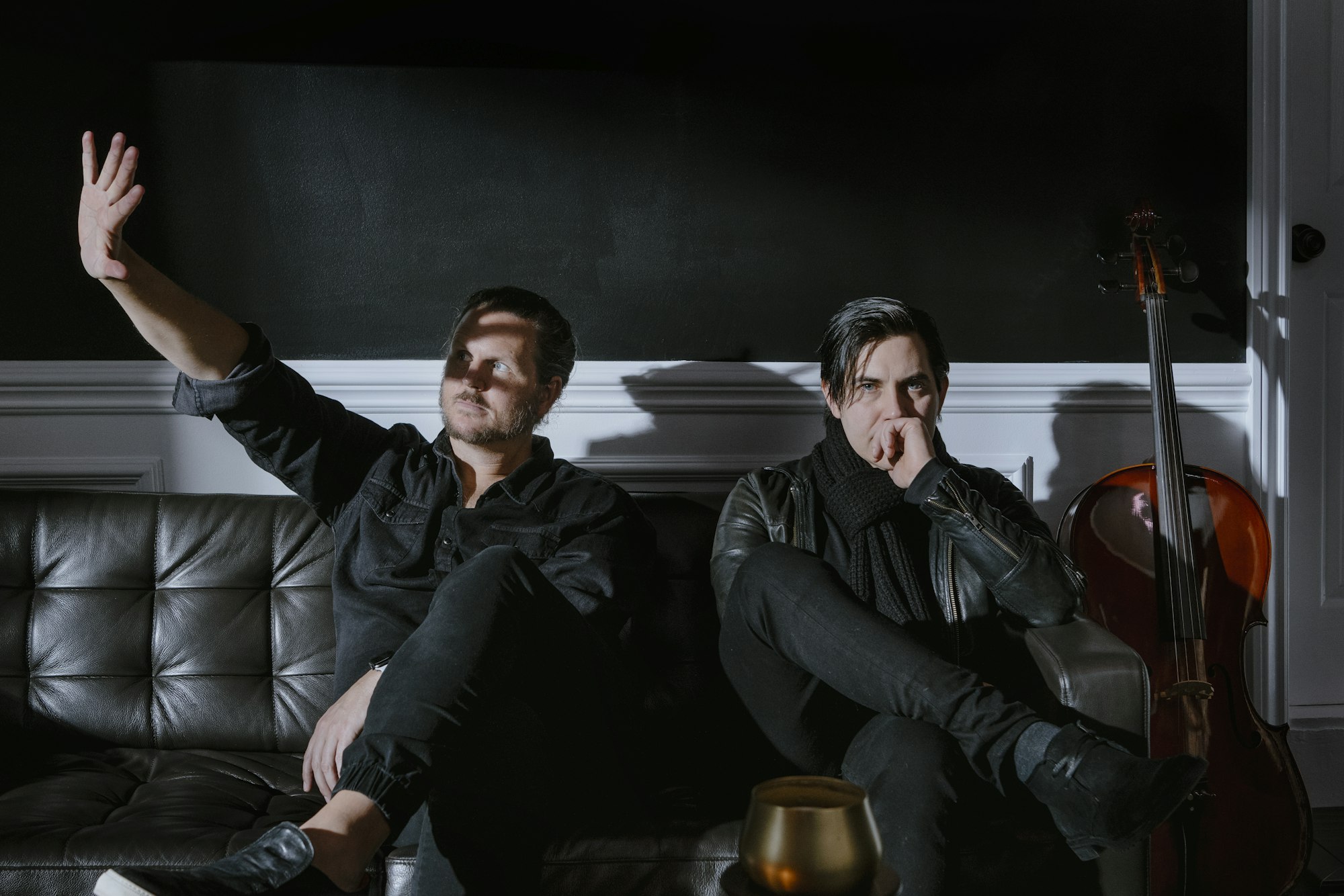
Firstly, how did Mike Flanagan introduce the project to the two of you?
Andy: I think our first introduction to it was via the scripts. He had discussed it with us a little bit. But it first came about via a discussion with the writers. It was actually while we were scoring Doctor Sleep. We went into the writers room and got to sit down with them and discuss the overall arc of what was going to be happening. That's always a fun experience because they've got artwork up on the wall, and it seems like their own little community. It's like the way it gets with us at the end of scoring. They're very good friends, they have inside jokes with each other and they're creating this world.
Taylor: We're like, wait, what, what's happening?! Holy cow.
Andy: Yeah. Our minds were blown because of some of the artwork. I don't want to ruin it but there was a certain piece of artwork they had up, and we were like, that's super disturbing, what's going on with that? You'll discover it, I think, around episode six. But things like that made it even more intriguing because Mike was able to show us the whole world, not just through his story but also via the other storytellers that had come together in the writers room.
Taylor: Yeah, Mike told us about it and then there was the book, The Turn of the Screw. We didn't know to what degree that would inspire the show. Then we started working on ideas. We discussed O Willow Waly, which plays throughout the show, and we did several arrangements of that. That was an early discussion, about how that theme played into the scripts. We only knew a couple of them and it was very exciting, because we read what scripts we had, but we hadn't read all of them. So, our heads were spinning.
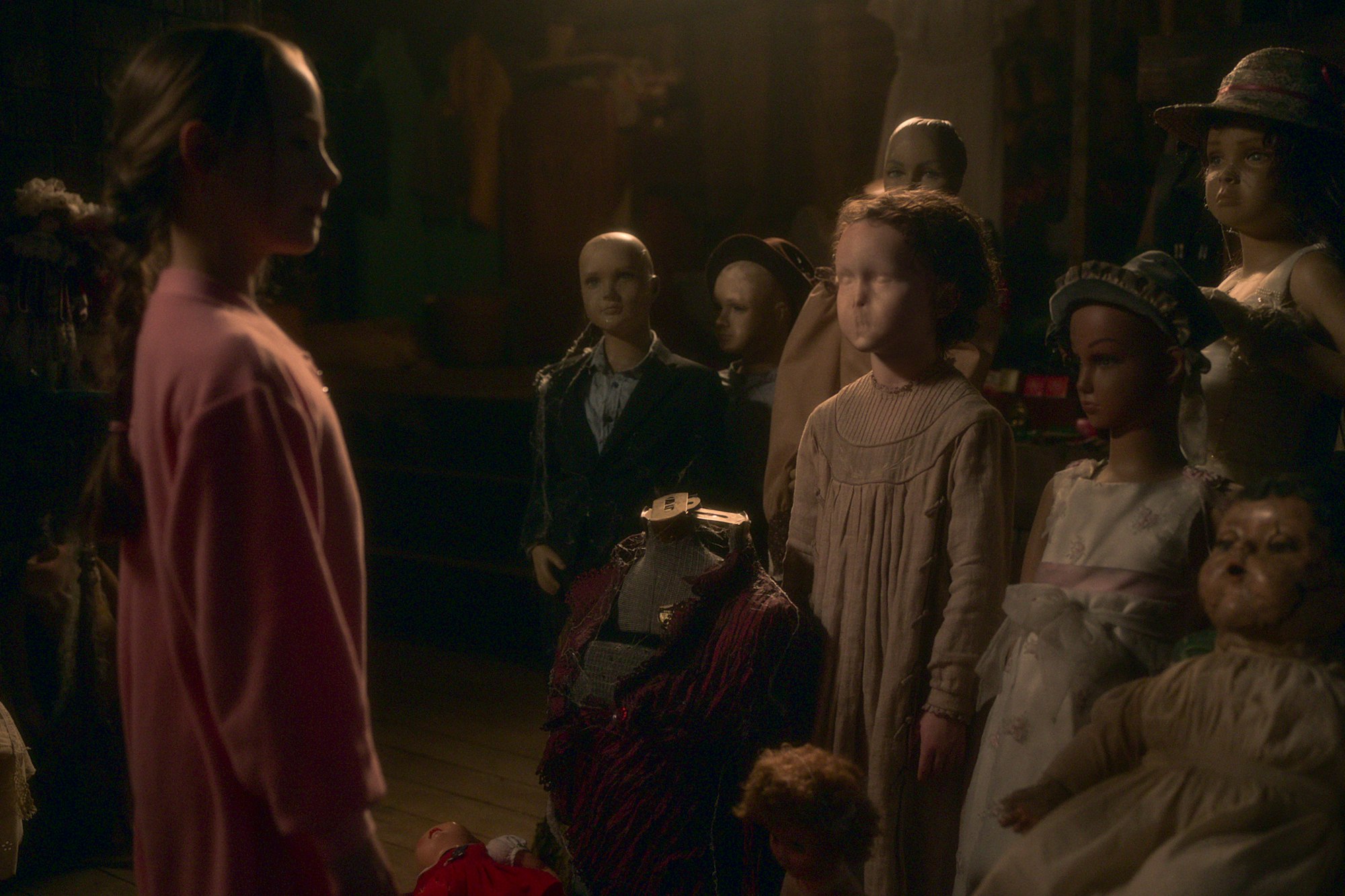
I'm a huge fan of ghost stories and what you're dealing with here is a show that's inspired by a psychological horror classic, The Turn of the Screw. Both story and show are rooted in a quintessential Englishness in terms of the setting and dynamics. How did that influence your harmonics and thematic choices?
Taylor: I think we always do our research early on, and we'll go to the books and take notes. But it really always comes down to our conversations with Mike Flanagan. He has a very clear idea he's trying to put through. He's trying to colour the show with a certain feel and tone and vibe. He's not one to be uncertain about the music. He has a direction in which he wants to go, and he's willing to try things. He then invites us to try things, and sometimes it works, and sometimes it doesn't.
There were several themes that we brought from season one into season two but we did certain elements to it to make it a little bit more harmonic, a little bit more complicated. That's because the story supported such an approach. We also wrote new thematic material that definitely had more of a, how do I say this, not a Mary Poppins feel, but a 'Britishness' to it. A lot of waltzes, a lot of that kind of stuff.
When it came to the Perfectly Splendid waltz, Mike seemed to grasp onto it and it went like that. It all comes down to the aesthetic that Mike likes, and he was also very busy working on other stuff at the time. He was overseeing the show with a lot of back and forth, and it was all about getting his ideas on it.
Andy: I suppose the waltz as a movement is inherently neutral. It's difficult with music to be neutral, it's the hardest thing. One single note can make you feel anxious, or a lovely set of chords can make you feel another way. But to feel neutral is a tightrope balancing act.
We always do our research early on and we'll go to the books and take notes. But it really always comes down to our conversations with Mike Flanagan.
Taylor, at the start you mentioned O Willow Waly, which was first composed for The Innocents, the 1961 adaptation of The Turn of the Screw. I'd consider that one of the greatest horror films of all time, a masterpiece of dread. Like we were saying with Mary Poppins, there's something about taking an apparently innocent nursery rhyme and exposing the evil underneath it. Was that a cornerstone when it came to composing the score?
Taylor: Mike and the team handpicked that piece of music. He feels the same way about The Innocents that you do. He's a big fan of it and there are multiple times when he pays homage to it throughout the show. I'm sure you noticed them. Mike always puts these Easter Eggs in things and some people catch them, others don't. I'm always like, oh my god! Even in Doctor Sleep he was doing that.
But yeah O Willow Waly was deliberately picked and we did renditions of it, different arrangements and variations. It certainly has a certain creepiness to it, and at times a certain sadness to it. As you were saying Andy, it can really shift. I think a lot of the other cues that we composed were like that. Is it sad or is it creepy? It fluctuates depending on how it's arranged and played.
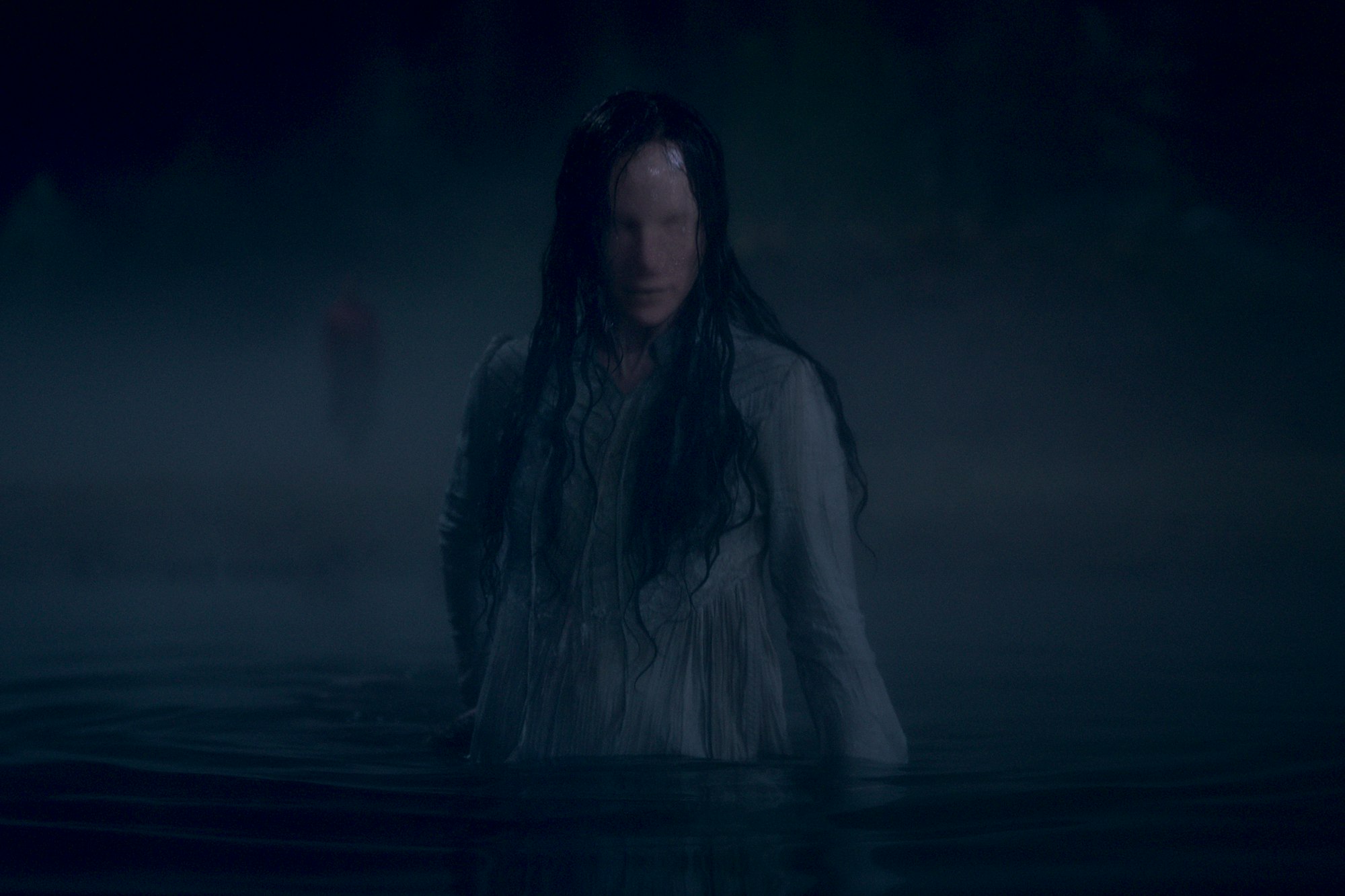
You guys always play around with sampled sounds to intriguing effect. There's one bit early on when our central character walks down the corridor, and we see something move in the foreground. There's an interesting, eerie noise used at that particular moment, so what was the process of creating those effects here, as opposed to The Haunting of Hill House?
Andy: Early on, a lot of it is trial and error. There's the writing of it, which Taylor and I mostly start on the piano. Then there's the trial and error of the production, and how that goes.
Certain sample libraries we use have been really helpful for creating an ambience because there's such a diverse palette of things to pull from. But then also it leads to a rabbit hole of interesting ideas. You can take a basic tune on the piano and as you start producing it, the ideas start to come. For the scene you're talking about, Taylor's got this crazy modular and synthesiser cave where he's gone nuts.
Taylor: I think it's the waterphone from season one.
Andy: Yeah. I think it's the pitched waterphone, isn't it?
Taylor: Yeah.
Andy: So, from season one, we had a bunch of waterphone recordings that Taylor did. When Taylor recorded them, it was really cold and he had his leather motorcycle jacket on. When he was playing it, the jacket was creaking and we didn't know it while we were recording it. On listening back to it, we were like, what is that weird extra sound?
Anyway, when we pitched all that down, it added an extra texture to things. I don't think there's any jacket creaking in the scene you're talking about but I think it is the detuned, by an octave or two, waterphone. That was manipulated. It's funny how these happy accidents happen. Yet other times we alight on the exact idea. It's an interesting, humbling experience.
Taylor: We chopped it all up and made these sample sets. That was probably the weird sound you're hearing. It has an almost vocal quality. It is quite breathy and ethereal, that's probably what it is.
Certain sample libraries we use have been really helpful for creating an ambience because there's such a diverse palette of things to pull from.
The series also allows the silence of the house, and its associated creaks and groans, to become its own kind of musicality. There are long stretches with no music at all, which is key to any great haunted house story. How much of a challenge is it to spot the music carefully with Mike and to locate it within the edit?
Taylor: It's funny you say that, because for season two, at least at first, Mike was very busy, so we couldn't get him as much as we could for season one. He then joined it later on. We were obviously not able to spot everything with him that we'd hoped to. We therefore discussed general things with him and we would overwrite with the assumption that it was going to be pulled in some places.
We chatted with Mike about what we were going for in certain scenes and of course, how we were going to implement season one. We had very creative conversations and I have to note the musical team we worked with. Trevor Gates who does the sound, Jonathan Wales who does the mixing, who's amazing. Then we had our music editor who's also like, use this and use this. It was very much a team effort, and when Mike's schedule finally freed up a bit and he was able to listen, it was great.
Andy: Yeah, it's nice to have the dialogue with extra people. I have my own thoughts on something, Taylor will have his. Then Taylor and I come together and we'll agree on whatever we agree on. That then goes out to our music editor, Brett Pierce and the mixer, Jonathan Wales. It's a nice experience because we encourage them, if they have a thought, to tell us and not treat it like we're right just because we're the composers.
It’s good to have a discussion, especially when it comes to spotting. Spotting almost becomes its own person in the show as to where a cue starts and stops. That's just as important as what's actually being played in the cue sometimes.
Taylor: It's almost like a marriage, I'd say, working with that team. We've been working with them for some time now and those guys are great. We love working with them. They want it to be as best as it can be, so they're rooting for you and you're rooting for them. It's a lot of support.
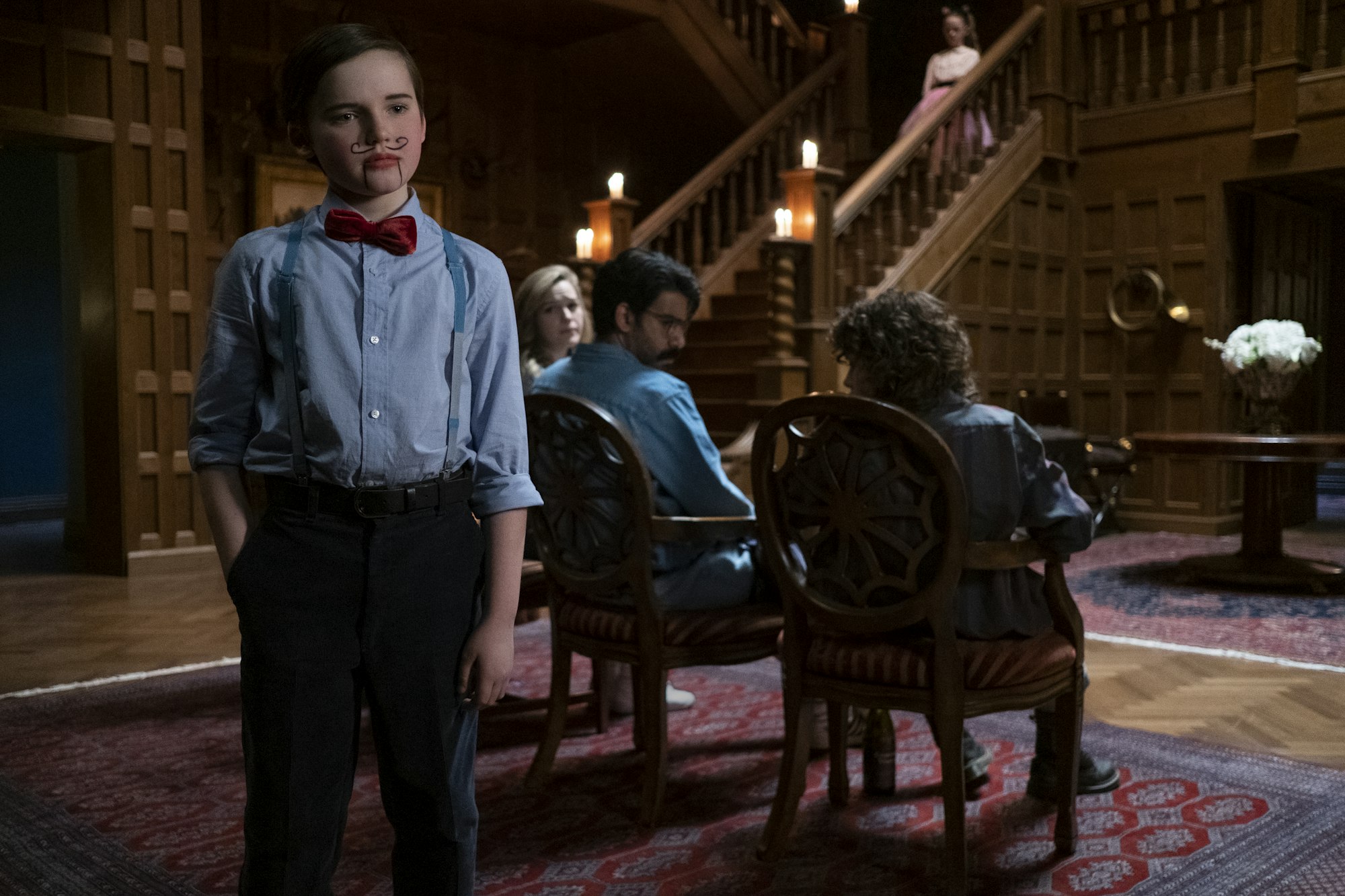
Like in The Haunting of Hill House, in Bly Manor, you've got a lot of spooks and spectres that are unleashed. Centrally we have Peter Quint and Rebecca Jessel, but there are many others. Was Mike keen for a multi-theme approach based on each of the ghosts? Did they each have their own identities and musical motifs that overlapped?
Andy: We had themes that overrode multiple ghosts, is that right Taylor? Not specific themes per ghost.
Taylor: The main through-line for the show is really love, and how it affects you. Ghosts and loss, and how Mike was blending those worlds to where love and loss bear certain similarities to being haunted. We definitely played recurring elements, for example, for Peter Quint. Flora and Miles. Just different things for different people, but we would also bring in that theme for another section because it was carrying the through-line of love.
Sometimes people will do things for love that aren't good. They'll push it to the degree where it's hurtful for themselves. However, they don't care, because they're in love. Perfectly Splendid, for instance, that was when everyone was coming to the house and it was, like, a beautiful place. We played that in several cases.
We recognise that Mike [Flanagan] is looking to achieve what he has in his head, and we want to help in any way we can.
You've worked with Mike Flanagan numerous times now. Is there a consistent shorthand that comes when you're working with him?
Andy: The shorthand is that we understand the general ideas, based on our early conversations with Mike. But then we're also aware that we're sorting it out, that's something that's really wonderful about Mike. He listens to how things affect him. Listens, hears, sees, and we might all agree on a certain direction in a scene. We then go and write down that direction. We might change what we write as we're going, based on what we're experiencing. Then when we play it for Mike, he'll explain how the scene sits with him. It’s an incredible quality to have.
We recognise that Mike is looking to achieve what he has in his head, and we want to help in any way we can. We can spend two weeks on a piece of music and he's like, no it's not right. On other occasions, it may not feel right, but it ties into our earlier discussions. Yet sometimes, we could unexpectedly hit a home run. We assume that Mike will hate what we've done, putting music where he told us not too. Then Mike will come back and say this scene was a five out of ten for me, and yet with the music it's a ten out of ten. The understanding is that we're all here to help make the project as good as it can be, based on the vision Mike has in mind.
Taylor: Not only does Mike work with the creative aspect of the content, as Andy said, listening to it and basing it on his feelings. Technically, he very much knows music. He wrote music for season one. He doesn't want to talk about it, but he throws it out there. When he previously had time, he'd come in and do a little bit of writing. Now, he's just too busy. But he knows music. He knows chord progressions and he's a great player. Those two worlds together are a rarity, and I think it obviously makes it exciting for us. Andy and I also try to push each other, trying to outdo this and that, which always makes it a fun challenge.
How do you measure up composing for this season compared to The Haunting of Hill House? Were there more challenges on this one?
Taylor: There were parts in season one that were more troublesome for us. There were a couple of times where, let's say, everything needed to shift and we needed something fast and aggressive. We'd then need to write it in a couple of hours. In those couple of hours, we need it finished, done and on the sketches.
Season two was interesting not only because everything needed to be decided so quickly, but because it was going to print and mix quickly. We didn't have a lot of time, once it was approved we had to record the instrumentation and put it into the show. The turnaround was really, really fast and we'd have to write it on the stage. One of us would go in the studio, take it and print, and we'd go back and forth. It was this hustle to get it done. It was a new chapter. It was very stressful. But at the same time, it was very rewarding when Mike liked what we were doing.
Also, in both seasons, we would overwrite tons of music, because we knew it was going to be pulled out, and so we had these conversations with Mike. But for Bly Manor, we were recording during COVID. How were we going to record live players? That was a big thing. And this season has a bit more of a feeling of traditionalism. It's a bit more classical than season one. So, it needed to be as live as possible, and we needed as many players as possible.
There were a handful of composers in the same situation. My buddy Jeff Russo was recording Star Trek the same way and he was pulling his hair out. Andy and I were like, how are we going to do this? We had this great mixer, Brad, and he had this clever way of recording all the players. We then blended some stuff, Andy and I recorded piano and it ended up working out really well.
For Bly Manor, we were recording during COVID. How were we going to record live players? That was a big thing.
Andy: Yeah, it was quite a process. We were scheduled to record on a Tuesday and on Friday, we talked to the recording studio and to Paramount. It was still not approved because of COVID, which is nobody's fault. It was due to all the protocols and everything. The studio then said they'd make the call at noon on the following Monday.
At noon, the day before we're supposed to have three recording sessions for a show that requires a whole bunch of live orchestra, we were having an ulcer! When we found out on Monday and they said we couldn't record, I was not in a good mood. I was probably in my worst mood of 2020. I was really stressed out about how this was going to go and I know Taylor was too. We've recorded remotely a lot, but there's a level of interaction when it comes to people in a room. When you're in a room with musicians, there's something that just happens, you can't write an essay about it. Everyone interacts, and it's great.
So overall, this was really stressful but it all worked out. We got on a Zoom call with all the first chairs and Mark Graham, the orchestrator and the mixer. Everybody had a good dialogue. We had a girl in upstate New York tracking bass guitar, and some of the pianos for us. Then we had a singer in Washington D.C. who's 14. She was singing the soprano line for the main titles. It was all remote and no-one was together. A very interesting experience and a lot of fun.
Taylor: It's stressful because you can always mix a hybrid with the live stuff. Spitfire has some of the best string libraries. But there's a certain register within the high register where, if you're doing certain articulations, it just sounds like, shoot me now!
Andy: E3 to G4 is like the poop range. No matter what you do or how much reverb you put on it, it's always just, like, dammit!
Taylor: And Mike's always like, guys this sounds great, but the sound of that one string right there...The cue's approved but now you can't use the orchestra and so we just give them the music and say, see you later! Good luck! We have no idea how it's going to sound.
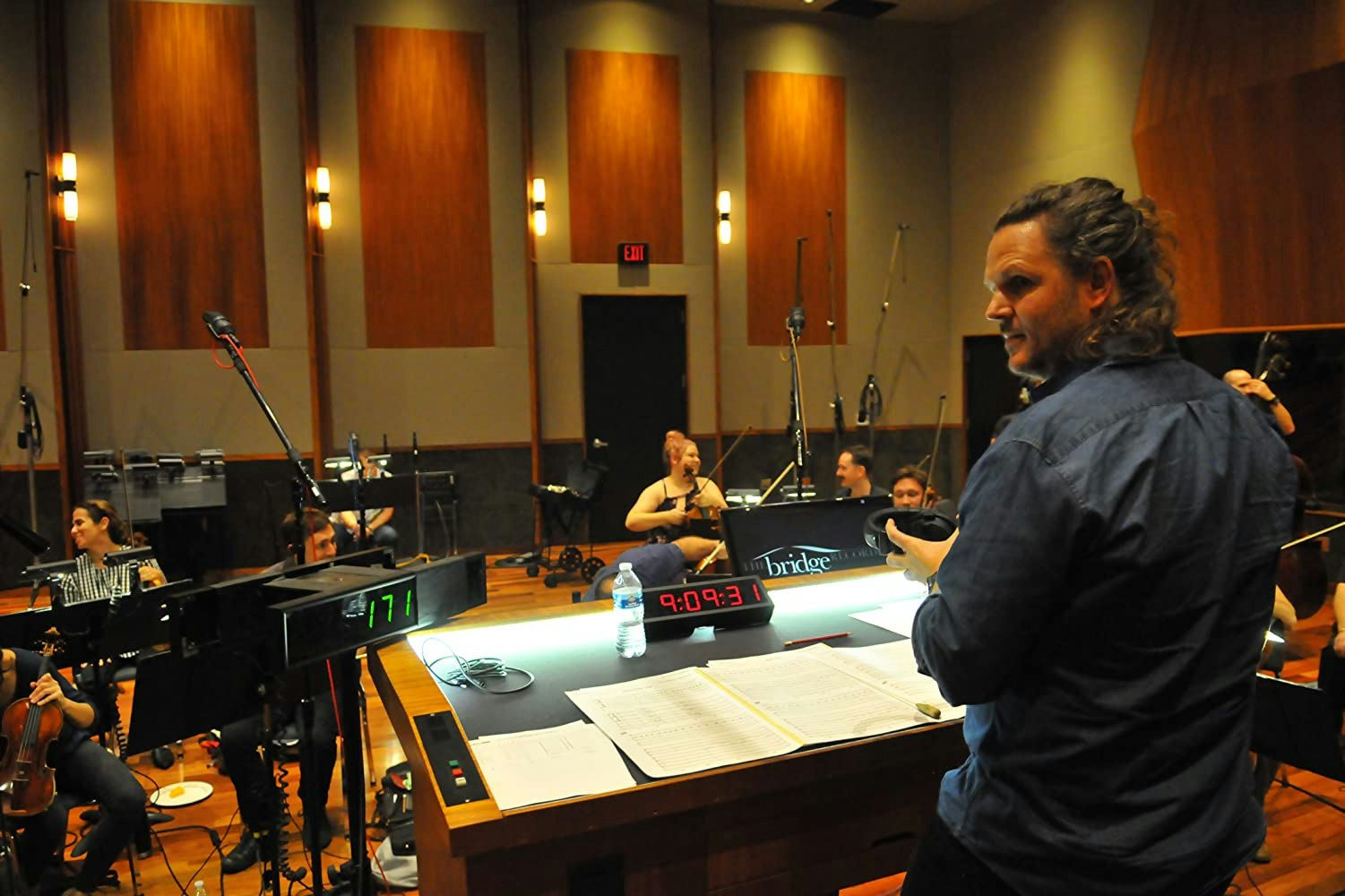
I interviewed Laura Karpman for Lovecraft Country and she spoke about this exact same issue, the notion of remote symphonic recording. Put simply, are you close-micing all the individual players and then mixing them all together?
Andy: Exactly right. In fact, Laura's mixer, Brad, is the same guy who did this. He's become the expert on this. It felt really nice when we had our first conversation with him about it because he was explaining how it was going to work, and why. That's exactly what you want to hear.
One final question. You're working within the horror/ghost story realm, so I wondered do you have any particular favourite scores from within this area?
Taylor: There's this old movie called, The Changeling, that is really, really creepy. The name of the composer is Rick Wilkins and I loved what he did with it. He's so talented and I remember loving, loving that score. It was haunting and disturbing. And also, strangely enough, although it's not a horror score, Somewhere In Time by John Barry. It feels like a ghost story to me. I'm a big John Barry fan and that score made me cry.
Andy: The ones that creep me out to this day would be The Exorcist, The Omen and Poltergeist. Those three scores are incredible. I like The Shining, and obviously we know everything there is to know about The Shining. But The Shining was music-edited for the most part, with the exception of a few tracks. Those other three are just brilliant for how they carry you through some scenes. Some of The Exorcist I think was music-edited as well, but it really hits me. I don't enjoy listening to those scores because they make me feel creeped out. I have to listen during the day, because while I appreciate what those scores do, I don't enjoy how I feel if I listen to them at night.
